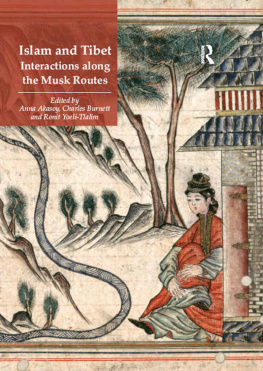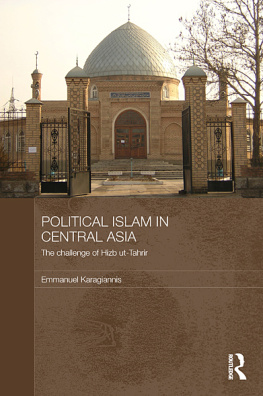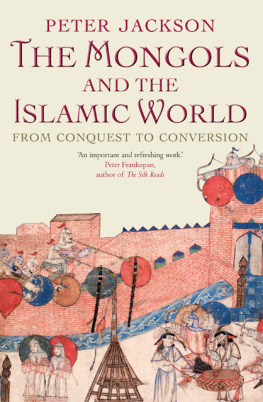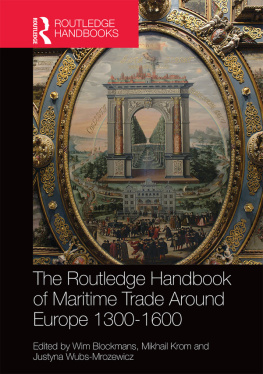ISLAM AND TIBET INTERACTIONS ALONG THE MUSK ROUTES
The first encounters between the Islamic world and Tibet took place in the course of the expansion of the Abbasid Empire in the eighth century. Military and political contacts went along with an increasing interest in the other side. Cultural exchanges and the transmission of knowledge were facilitated by a trading network, with musk constituting one of the main trading goods from the Himalayas, largely through India. From the thirteenth century onwards the spread of the Mongol Empire from the Western borders of Europe through Central Asia to China facilitated further exchanges. The significance of these interactions has been long ignored in scholarship.
This volume represents a major contribution to the subject, bringing together new studies by an interdisciplinary group of international scholars. They explore for the first time the multi-layered contacts between the Islamic world, Central Asia and the Himalayas from the eighth century until the present day in a variety of fields, including geography, cartography, art history, medicine, history of science and education, literature, hagiography, archaeology, and anthropology.
Islam and Tibet Interactions along the Musk Routes
Edited by
ANNA AKASOY
CHARLES BURNETT
RONIT YOELI-TLALIM

First published 2011 by Ashgate Publishing
Published 2016 by Routledge
2 Park Square, Milton Park, Abingdon, Oxon OX14 4RN
711 Third Avenue, New York, NY 10017, USA
Routledge is an imprint of the Taylor & Francis Group, an informa business
Copyright Anna Akasoy, Charles Burnet t, Ronit Yoeli-Tlalim and the contributors 2011
Anna Akasoy, Charles Burnett and Ronit Yoeli-Tlalim have asserted their right under the Copyright, Designs and Patents Act, 1988, to be identified as the editors of this work.
All rights reserved. No part of this book may be reprinted or reproduced or utilised in any form or by any electronic, mechanical, or other means, now known or hereafter invented, including photocopying and recording, or in any information storage or retrieval system, without permission in writing from the publishers.
Notice:
Product or corporate names may be trademarks or registered trademarks, and are used only for identification and explanation without intent to infringe.
British Library Cataloguing in Publication Data Islam and Tibet interactions along the musk routes.
1. Islam China Tibet History. 2. Culture diffusion China Tibet History. 3. Culture diffusion Islamic countries History. 4. Tibet (China) Civilization Mongolian influences. 5. Tibet (China) Relations Islamic countries. 6. Islamic countries Relations China Tibet.
I. Akasoy, Anna. II. Burnett, Charles (Charles S. F.) III. Yoeli-Tlalim, Ronit.
303.48251501767dc22
Library of Congress Cataloging-in-Publication Data
Islam and Tibet interactions along the musk routes / [edited by] Anna Akasoy, Charles Burnett, and Ronit Yoeli-Tlalim.
p. cm.
Includes bibliographical references and index.
ISBN 978-0-7546-6956-2 (hardcover : alk. paper)
1. Islamic countriesRelationsChinaTibet. 2. Tibet (China)RelationsIslamic countries. 3. Islamic countriesCivilization. 4. Tibet (China)CivilizationIslamic influences. 5. IslamChinaTibetHistory. I. Akasoy, Anna. II. Burnett, Charles (Charles S. F.) III. Yoeli-Tlalim, Ronit.
DS35.74.C6I84 2010
303.48217670515dc22
2010008294
ISBN 13: 978-0-7546-6956-2 (hbk)
Contents
Ronit Yoeli-Tlalim
Anna Akasoy
Kevin van Bladel
Assadullah Souren Melikian-Chirvani
Dan Martin
Anya King
Christopher I. Beckwith
Peter Zieme
Paul D. Buell
Arezou Azad
Georgios T. Halkias
Marc Gaborieau
Alexandre Papas
Thierry Zarcone
Johan Elverskog
John Bray
Diana Altner
Jan Magnusson
FIGURES
MAPS
Most of these papers originated in a conference entitled Islam and Tibet: Cultural Interactions, which was held at the Warburg Institute, University of London, on 16-18 November, 2006 as part of a project supported by the Arts and Humanities Research Council (AHRC) (APN19294 and website http://warburg.sas.ac.uk/islamtibet/indexit.htm). In addition to the contributors to this volume, Yossef Rapoport talked about the evidence for trade route through Tibet in a map in the eleventh-century Book of Curiosities (see below). John Newman, of the New College of Florida, discussed the Klacakra Tantra as a source for Tibetan knowledge of Islam, and Deborah Klimburg-Salter of the University of Vienna gave an illustrated evening lecture in the elegant Islamic setting of Leighton House, investigating the most likely kind of Buddhist statue that was allegedly sent by the King of Tibet to the caliph al-Mamn in the early ninth century. The conference was enriched by the expert chairing of the sessions by Alexander Berzin, Peter Jackson, Charles Ramble, Emilie Savage-Smith and Edward Henning, and by the concluding discussion led by Geoffrey Samuel. In addition to the AHRC, the conference received generous funding from the Shelley and Donald Rubin Foundation, the British Academy and the Wellcome Trust. Further support towards the publication of this book was made by the Shelley and Donald Rubin Foundation. We are very grateful to Bruce Payne, the Executive Director of the Foundation, for his constant encouragement of research in Islam and Tibet. We would also like to thank the following libraries for having granted us permission to reproduce images: the Nasser D. Khalili Collection of Islamic Art, the Archaeological Survey of India, the British Library, the Forschungs-und Landesbibliothek Gotha and the Bodleian Library (Oxford). The lions share of the editorial work has been done by Anna Akasoy, but all three editors have contributed their expertise in their respective fields, and Charles Burnett has prepared the index. We would like to thank Tsering Wangyal Shawa for designing the maps. We are very grateful to the Warburg Institute for providing congenial surroundings and much practical support for the pursuit of the Islam and Tibet project in general, and for hosting this conference in particular.
The transliteration of non-European languages has been standardized in this volume except where authors have preferred a different system. Diana Altners article, referring to present-day issues, uses the simplified Chinese character system (we are grateful to Tim Barrett for checking the Chinese characters). Unless otherwise indicated, years are those of the Common Era. The only abbreviations for publications referred to in this volume are EI2 (Encyclopaedia of Islam, second edition [Leiden, 2006], online edition) and EIr (Ehsan Yar-Shater [ed.], Encyclopaedia Iranica [14 vols to date, London, 1982-2008]; available at www.iranica.com).
Languages are abbreviated as follows:
Ar. Arabic
Arm. Armenian
Ch. Chinese
Mo. Mongolian
Pe. Persian
Sa. Salar
Skt. Sanskrit
Syr. Syriac
Tib. Tibetan
Tu Turkish
Uy. Uyghur
The Editors
Ronit Yoeli-Tlalim
In the mid-eighth century three major empires abutted each other: the Abbasid Empire, founded in 750, which established its new capital at Baghdad in 762 and embraced the culture of Persia; the Tibetan Empire, which reached its height in the early ninth century; and Tang China (618-907) in the east, with its capital of Chang-an (Xian), spilling out into the Tarim Basin (East Turkistan, now Xinjiang). Cutting across these political regions were two powerful religious movements: Buddhism, which from its origins in northern India, challenged and eventually displaced local religions in China and Tibet, and Islam, which spread from the West over the Indian subcontinent and South East Asia, reaching China and the Tibetan borderlands. These political and religious movements of the eighth century were to shape the development of Central Asian civilizations for many centuries to come, and can still be discerned in the societies of the region today. It is to the ways in which the Islamic empire, in particular, impinged on Tibet (and
Next page








